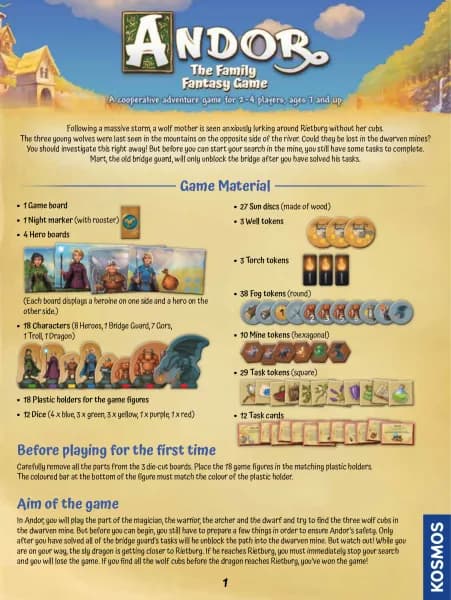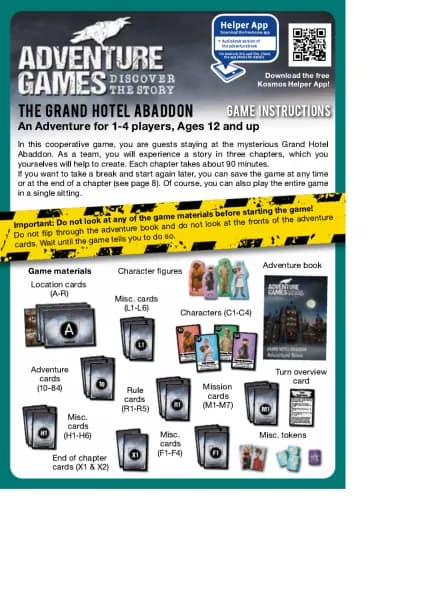Thames & Kosmos Color-Changing Crystals handleiding
Handleiding
Je bekijkt pagina 2 van 2

EXPERIMENT 1
EXPERIMENT 2
EXPERIMENT 3
Check it out
WHAT’S HAPPENING? The granules of salt crystal will dissolve in warm
water and eventually turn invisible, since you can’t see their smallest components —
called ions — with the naked eye. When the water cools, the ions gather into a very
specific shape, which eventually turns visible again — a crystal has taken form!
YOU WILL NEED:
› Safety glasses, potassium alum, lid
remover, potassium hexacyanofer-
rate(III), measuring cup, wooden
spatula, water, old cooking pot, triv-
et, pot holder, clean, empty jelly jar
(without lid), paper towels
››› First, put on your safety glasses and
get a trivet or hot pad ready for your
work area.
››› Use the lid remover to open the
chemical vial with the potassium alum
(potassium aluminium sulfate), and
empty the entire contents into the jelly
jar.
››› Using the wooden spatula, add 3 to 4
scoops of the potassium hexacyanofer-
rate(III). You can use all of it except for
a little bit, which you will need later
for the chemical analysis.
YOU WILL NEED:
› 2 display cases, scissors, tape, small
screwdriver
›››
Divide the crystals between the two
display cases. Cut the yellow and blue
labels out of this instruction manual
and clamp them in place between the
lid and the bottom of the two cases. If
they don’t stay in place, secure them
with a little tape.
Which crystals change the most quickly? Do the
crystals kept in the dark change color too?
Growing color-changing crystals
“Magical” transformation
Caution!
Make sure that nobody,
particularly any young children, can get into
the crystal display cases!
Tip!
You can lock the
case by squeezing it
tightly shut. To open it,
insert a small screw-
driver into the slot
on the side and
turn it carefully.
Tip!
You will want to be absolutely sure
that the salts are completely dissolved
— that way, you will have the best chance
of growing nice crystals.
Tip!
This is the right way to use the pipette:
Squeeze the upper part of the pipette between
thumb and forefinger, and dip the tip of the
pipette into the liquid. As soon as you release
pressure on the bulb, the liquid will rise up the
pipette tube. By applying careful pressure to
the bulb again, you can either empty the pipette
contents completely or squeeze out just
a few drops.
Before filling the pipette with the next
chemical, you will have to clean it carefully. To
do that, draw some clean water into the
pipette, shake, and squeeze it empty. Repeat
this procedure several times.
››› Use the measuring cup to measure 50 ml of
water (1 x 20 ml and 1 x 30 ml) and add the
water to the two chemicals in the jar. Stir
everything well with the spatula.
››› Fill the pot about 2 cm deep with water.
Bring the water to a boil on the stove. Then
turn off the stove and set the pot carefully on
the trivet or hot pad.
››› Now place the jelly jar holding your chemi-
cal mixture in the pot and stir it with the
wooden spatula. The hot water will warm
the contents of the jar, and the two salts will
gradually dissolve. If you can still see some
alum granules, remove the jar from the pot
with a pot holder. Bring the water in the pot
to a boil again and repeat the process.
››› Label the jar and set it in a safe place. Now
you just have to wait! But after a few hours,
you will find transparent angular shapes on
the bottom of the jar, which will keep form-
ing with time. After about two days, your
crystals will be “all grown up.”
Chemical analysis
YOU WILL NEED:
› Safety glasses, remaining potassium
hexacyanoferrate(III), 2 measuring
cups, pipette, household white vinegar,
iron nail, water
››› Pour some household white vinegar into
the measuring cup. Place the nail in it
and set the cup in a safe place for a few
days. The vinegar will gradually dis-
solve some of the iron, which will show
itself as a brown coloration.
››› Add the rest of the potassium
hexacyanoferrate(III) to the other mea-
suring cup and dissolve it in a little
water.
››› With the pipette, carefully drip a little
potassium hexacyanoferrate(III) solu-
tion into the measuring cup containing
the vinegar.
WHAT’S HAPPENING
There’s a chemical reaction that
takes place in the crystals, as
you will learn in greater detail
in Experiment 3. Because the
reaction happens more quickly
under the influence of light,
the crystals change their color
faster in a bright location than
in a dark location.
WHAT’S HAPPENING
Right away, you will get a greenish to blue color.
You just performed what’s called a chemical
analysis. You used one substance (the potassium
hexacyanoferrate) to test for the presence of
another substance (the dissolved iron from the
nail). In other words, the two substances reacted
with each other chemically and formed a vivid
blue dye that serves as a clear indication that the
reaction took place. This dye is known as Prus-
sian blue.
This same reaction took place in your crystals.
Potassium hexacyanoferrate(III) contains iron as
well, although it is so “hidden” inside the crystal
that at first no Prussian blue formed. Only with
the help of the alum, which gradually decom-
poses the red salt, does the color appear in the
crystals, and the yellow slowly turns to green
and then blue.
Caution!
Have an adult help you! Be very
careful not to burn yourself on the hot pot,
and don’t forget to turn off the stove!
›››
Ideally, place one of the display cases in a
dark closet and the other one on a bright
window ledge. Compare the colors of the
crystals every three days or so.
CULPRIT NABBED… THANKS TO CHEMICAL
ANALYSIS!
When the police get to the scene of a crime, they search for clues.
These days, though, it isn’t just fingerprints that might lead them
to the perpetrator. Chemical analysis of DNA helps them in their in-
vestigation too.
DNA is a complex chemical compound that is found in
every cell of your body. It can act as a sort of “biological fingerprint”
— because no two people have the same DNA. This compound con
-
tains all the biological information of an individual, such as height,
sex, eye color, and hair color.
But let’s get back to the crime
scene. The police will look for
cells from the perpetrator’s body,
which may be contained in the
roots of a hair or small flakes of
skin, for example. The DNA in
these cells is analyzed and com
-
pared with DNA from the cells of
any suspects. This technique has
already been used to solve a lot of
crimes!
WHAT IS PRUSSIAN BLUE USED FOR?
This blue dye has been popular for centuries, because it has an in
-
tense color and doesn’t fade. If you have a set of paints, you might
also find this color under the name “Berlin blue.” Even today, it is
processed into paint dyes and used for the blue color in ink
cartridges.
Prussian blue, or Berlin blue, was discovered in 1706 by a paint
manufacturer in Berlin, in a region of Germany that used to be
known as Prussia — hence the name!
cell
nucleus
Cells form the smallest
building blocks of humans,
animals, and plants. Our
skin, our bones, and our
muscles, for example, are
made up of countless cells.
They are so tiny that they
are only visible under the
microscope. The DNA is
contained inside the cell
nucleus, which is con-
tained inside the cell.
CYANOTYPE
The chemical reaction from Experiment 3
also forms the basis for an unusual photo
-
graphic process known as cyanotype. In
this process, thick paper is painted with a
solution of red potassium hexacyanofer-
rate(III) and a special iron-containing salt
that gradually decomposes in the light and
then reacts with the red potassium
hexacyanoferrate(III).
If this kind of paper is covered with a sten
-
cil, for example, and allowed to sit in the
sunlight for a little while, only the parts ex
-
posed to the light will turn blue.
This process was used by the British bota
-
nist and illustrator Anna Atkins, who had a
book displaying pictures of various plants
that were created by the cyanotype
technique.
››› Use the wooden spatula to carefully re-
move the crystals and place them on a
paper towel to dry. Depending on how
warm or cool it was when the crystals
were growing, they will have turned
yellow or yellowish green. Pour the left-
over solution down the drain with lots
of water, and rinse thoroughly.
Bright Crystals Dark Crystals
Bekijk gratis de handleiding van Thames & Kosmos Color-Changing Crystals, stel vragen en lees de antwoorden op veelvoorkomende problemen, of gebruik onze assistent om sneller informatie in de handleiding te vinden of uitleg te krijgen over specifieke functies.
Productinformatie
| Merk | Thames & Kosmos |
| Model | Color-Changing Crystals |
| Categorie | Niet gecategoriseerd |
| Taal | Nederlands |
| Grootte | 4653 MB |







